WMD Arpitecht Handleiding
WMD
Niet gecategoriseerd
Arpitecht
Bekijk gratis de handleiding van WMD Arpitecht (5 pagina’s), behorend tot de categorie Niet gecategoriseerd. Deze gids werd als nuttig beoordeeld door 93 mensen en kreeg gemiddeld 4.7 sterren uit 47 reviews. Heb je een vraag over WMD Arpitecht of wil je andere gebruikers van dit product iets vragen? Stel een vraag
Pagina 1/5

TRANSPOSE: In the middle posi-
tion, this knob is at 0, clockwise
transposes up to +12 semitones,
and counter-clockwise transposes
-12 semitones. 1V/OCT, -1V to +1V.
RESET: This button, whose func-
tion is also accessible through the
RESET input, returns the sequence
to the first step of the arpeggio.
ROOT ENABLE: This switch dis-
ables the root note of the scale.
The jack is normaled high, and
the root switch will invert the CV
when down.
DIRECTION: Change the direction
of the arpeggiation here. The
middle position of the switch is UP
and DOWN. When the CV jack is
used, the switch is disabled, and
direction is directly controlled by
the voltage on the jack. High for
UP, low for DOWN.
SCALE: Selects between 16 differ-
ent scales, beginning with major
and ending (all the way clockwise)
with chromatic.
NOTES: The Arpitecht features
64 note masks that allow you to
select which notes in the scale
will be incorporated into the
arpeggiation.
RHYTHM: The RHYTHM knob
selects between 32 built in gate
sequences. Together with SLIDE
RHYTHM, a world of rhythmic
variation is right at your fingertips.
RANGE: The two RANGE buttons
select the overall octave spread
of the arpeggiation or quantized
CV, while the accompanying LEDs
display the current position (blue)
and range (red).
SLIDE TIME: Controls the rate of
the analog slide circuit when trig-
gered by either the internal SLIDE
RHYTHM or the SLIDE input.
SLIDE RHYTHM: Like RHYTHM,
this knob allows you to apply one
of 32 automatic slide rhythms to
your sequence. Instant acid.
NEW OUT: The NEW output deliv-
ers a trigger every time the note
changes.
RUN: This input allows the step input to
advance. It is normaled high.
STEP: A pulse here will advance
the arpeggio to the next step.
RANDOM: When high, the next step will
be randomized within the scale, mask,
and range.
INPUT: Quantize CV signals by
plugging in here. This also serves
as the arpeggio start note. Chang-
ing the voltage here alters the
note at which the arpeggio begins,
and resets step to zero. 0-5 Volts.
SLIDE OUT: Gate for when a slide is
active from SLIDE RHYTHM or SLIDE
input.
1V/OCT OUT: -1 to 6V compensated/
buffered output. GATE OUT: Output that combines
the RHYTHM PATTERN, pulse
width of the STEP input, and held
SLIDE gates.
ARPITECHT
RHYTHMIC ARPEGGIO GENERATOR AND QUANTIZER

Depth: 30mm (with cables)
Power: +70mA, -35mA (+84mA, -48mA with Triad)
All CV Inputs: 100k ohm impedance
CV Outputs: (including Triad): Buffered 100 ohm impedance
Automatic load compensation
Gate Inputs: 50k ohm Impedance
Gate Outputs: 10V, 470 ohm impedance
CV inputs sum with knobs. Full sweep is 5V
Input Range: 0-5V (Transpose: +-1V)
Gate/Logic Inputs: 2V threshold Schmitt Trigger
Output Range: -1 to 6V. 14 bit
Triad Note Output Range: 0-4V. 12 bit
Inversion CV Input Thresholds: 1.25V and 2.5V
Firmware upgradeable via USB
TRIAD EXPANDER
SPECSINTRODUCTION
INVERSION: Transposes the lowest
note up an octave.
0: No transposition.
1: Transpose note 1.
2: Transpose notes 1 and 2.
TRIAD: CV/Knob for selecting the
group of three notes from the
scale. Follows Scale and Transpose
on the Arpitecht.
NOTE 1-3: Buffered CV outputs for
each note in the triad. NOTE 1 is the
lowest note from the display.
NOTE 3 is the highest.
NEW: Trigger output when the
TRIAD is changed. No trigger for
inversion changes.
ARPITECHT TRIAD
RED STRIPE
The Arpitecht started as a quantizer that used only CV to determine
scales and notes. Immediately, it was super playable and fun to ex-
plore. But tying up a lane just for sequencing/quantizing seemed like
a waste of good space.
I added a clock input so the Arpitecht could step through its own
notes. This let us do nice changes with that same single-lane se-
quencer, running slower. The concept for the base module was 95%
done on the first prototype. Refinement took eight more revisions.
Coding and revisions took the better part of a year as I wrote and re-
wrote parts of the firmware to be faster and as I subtly improved
the interface. A couple full re-starts took place as well.
Then, once it was nearly done, I heard, “What if it could do chords?”
from the design room... Fortunately there was a single ADC input
left, and the Triad came to be after a few prototypes and lots of
coding.
Once the first bit of code was running on the Arpitecht, it was in-
stant fun. Now that it’s finished, it’s instant techno, or avant garde
jazz, or chip-tune trill chords.
Thank you for purchasing an Arpitecht, I hope you enjoy it as much
as we do.
INCLUDED EXPANDER
CABLE SHIPS WITH
A DUMMY PIN TO
PREVENT REVERSED
CONNECTION

SCALES
(ROOT NOTE: C)
Product specificaties
| Merk: | WMD |
| Categorie: | Niet gecategoriseerd |
| Model: | Arpitecht |
Heb je hulp nodig?
Als je hulp nodig hebt met WMD Arpitecht stel dan hieronder een vraag en andere gebruikers zullen je antwoorden
Handleiding Niet gecategoriseerd WMD

1 Maart 2024

9 Juli 2023

9 Juli 2023

9 Juli 2023

9 Juli 2023

9 Juli 2023

8 Juli 2023

8 Juli 2023

8 Juli 2023

7 Juli 2023
Handleiding Niet gecategoriseerd
- Asustor
- Valeton
- Skytronic
- Maturmeat
- Kerbl
- CDN
- AIC
- Marian
- Triax
- Zega
- Beeletix
- MagnaPool
- Vasagle
- Gardol
- Comatec
Nieuwste handleidingen voor Niet gecategoriseerd
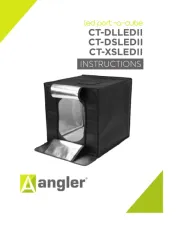
18 September 2025
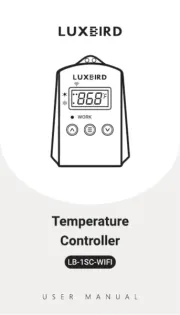
18 September 2025
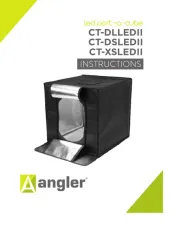
18 September 2025

18 September 2025

18 September 2025

18 September 2025
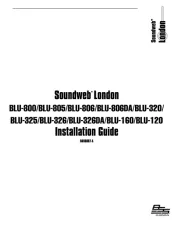
18 September 2025

18 September 2025

18 September 2025
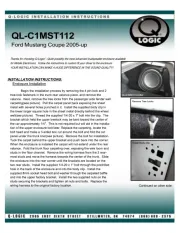
18 September 2025